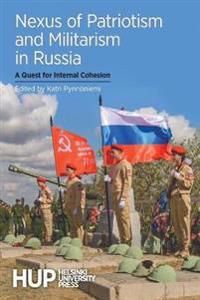This edited volume explores patriotism and the growing role of militarism in today's Russia. During the last 20-year period, there has been a consistent effort in Russia to consolidate the nation and to foster a sense of unity and common purpose. To this end, Russian authorities have activated various channels, from educational programmes and youth organizations to media and popular culture. With the conflict in Ukraine, the manipulation of public sentiments - feeling of pride and perception of threat - has become more systemic. The traditional view of Russia being Other for Europe has been replaced with a narrative of enmity. The West is portrayed as a threat to Russia's historical-cultural originality while Russia represents itself as a country encircled by enemies. On the other hand, these state-led projects mixing patriotism and militarism are perceived sceptically by the Russian society, especially the younger generations.This volume provides new insights into the evolution of enemy images in Russia and the ways in which societal actors perceive official projections of patriotism and militarism in the Russian society. The contributors of the volume include several experts on Russian studies, contemporary history, political science, sociology, and media studies.
This edited volume explores patriotism and the growing role of militarism in today's Russia. During the last 20-year period, there has been a consistent effort in Russia to consolidate the nation and to foster a sense of unity and common purpose. To this end, Russian authorities have activated various channels, from educational programmes and youth organizations to media and popular culture. With the conflict in Ukraine, the manipulation of public sentiments - feeling of pride and perception of threat - has become more systemic. The traditional view of Russia being Other for Europe has been replaced with a narrative of enmity. The West is portrayed as a threat to Russia's historical-cultural originality while Russia represents itself as a country encircled by enemies. On the other hand, these state-led projects mixing patriotism and militarism are perceived sceptically by the Russian society, especially the younger generations.This volume provides new insights into the evolution of enemy images in Russia and the ways in which societal actors perceive official projections of patriotism and militarism in the Russian society. The contributors of the volume include several experts on Russian studies, contemporary history, political science, sociology, and media studies.













